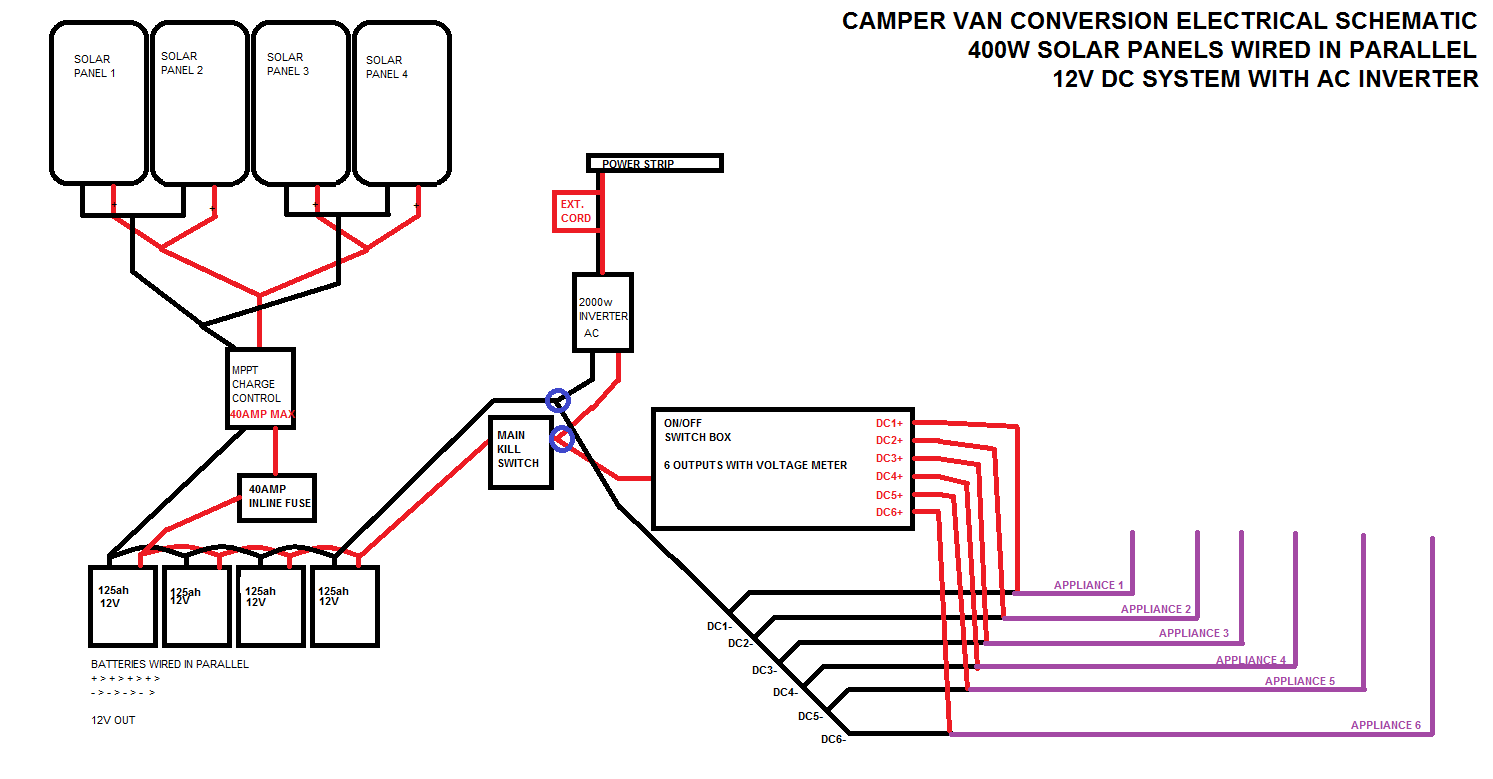Hello everyone,
I'm new here, and I've become invested in the idea of becoming a vandweller. I've been doing weeks (hundred or so hours) of research on electrical works, interior design, plumbing, diy cooling systems, diy heating systems, compost toilets, vans, trailers, etc. etc. I fell in love with the idea of urban stealth camping, and being able to travel nationwide in a tiny house on wheels. I've been watching hundreds of YouTube videos, from how to's, to vlogs on vandwelling. I feel like this is what I am being called to do by my gut.
I've started work on a crude electrical schematic that I intend to use when it comes time to wire my system to solar.
I am curious if there is something I might be missing?
Do I need a fuse box for DC appliances? If I have 4 125AH batteries, what is the max Amp load I can run at any given time? Would I be correct in assuming that it is 500amps? I feel like this stuff is a no brainer but I like to ask.
I have no intention of having a 500amp load at one time, I'm just curious if I'm understanding loads and batteries. I feel like that doesn't make a whole lot of sense and is probably incorrect.
As I understand it, it would be 500AH, and that's over 20 hours. So 25amps per hour. How do I know how many amps per hour a single thing, like a water pump, uses?
So let's take an example. A 15w, 12v water pump uses 1.25 amps. Is that 1.25 amps per hour? Or is that 1.25 amps per second? Or what?

I'm new here, and I've become invested in the idea of becoming a vandweller. I've been doing weeks (hundred or so hours) of research on electrical works, interior design, plumbing, diy cooling systems, diy heating systems, compost toilets, vans, trailers, etc. etc. I fell in love with the idea of urban stealth camping, and being able to travel nationwide in a tiny house on wheels. I've been watching hundreds of YouTube videos, from how to's, to vlogs on vandwelling. I feel like this is what I am being called to do by my gut.
I've started work on a crude electrical schematic that I intend to use when it comes time to wire my system to solar.
I am curious if there is something I might be missing?
Do I need a fuse box for DC appliances? If I have 4 125AH batteries, what is the max Amp load I can run at any given time? Would I be correct in assuming that it is 500amps? I feel like this stuff is a no brainer but I like to ask.
I have no intention of having a 500amp load at one time, I'm just curious if I'm understanding loads and batteries. I feel like that doesn't make a whole lot of sense and is probably incorrect.
As I understand it, it would be 500AH, and that's over 20 hours. So 25amps per hour. How do I know how many amps per hour a single thing, like a water pump, uses?
So let's take an example. A 15w, 12v water pump uses 1.25 amps. Is that 1.25 amps per hour? Or is that 1.25 amps per second? Or what?














































































